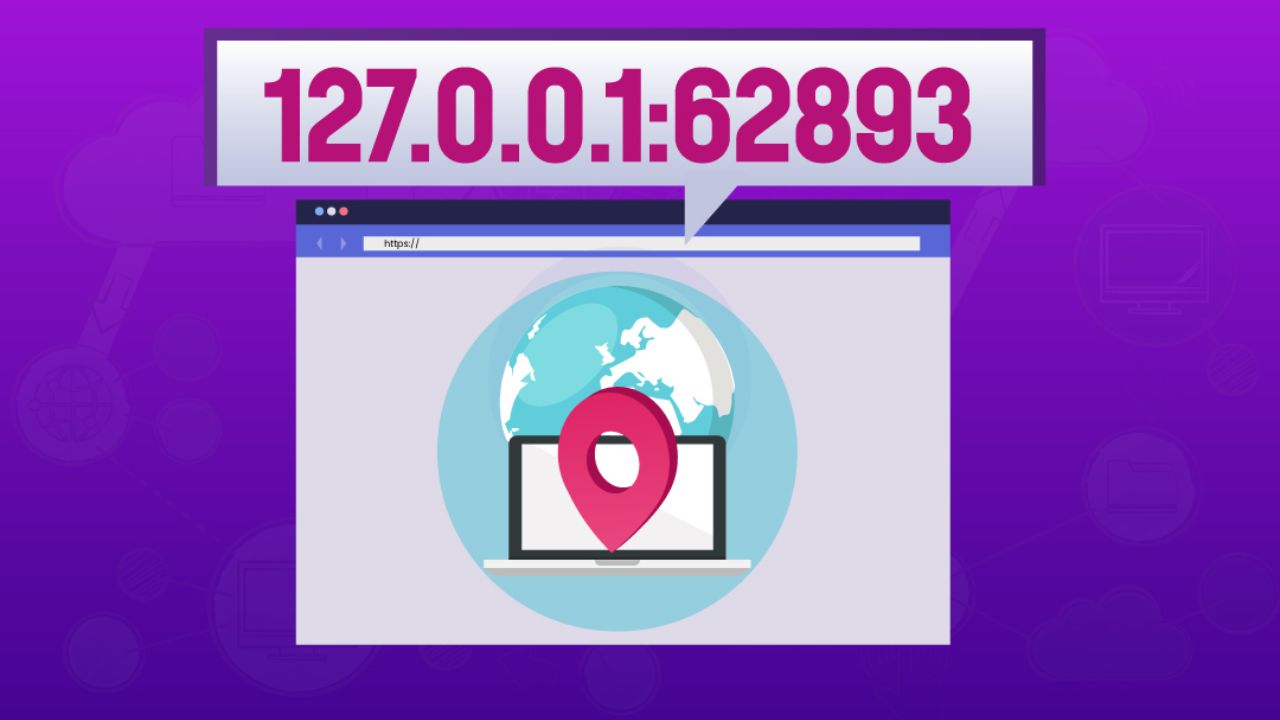Boost Local Development: 4 Steps to Master 127.0.0.1:62893
Learn the essentials of 127.0.0.1:62893 for a secure, efficient, and smooth local development experience.
In today’s fast-paced world of web and software development, having a reliable local server setup is essential. It allows developers to test, troubleshoot, and improve their work before making it live, ensuring a polished and secure final product.
However, setting up and managing a local server can come with its challenges. This is where 127.0.0.1:62893 comes in. This combination of an IP address and a port plays a critical role in managing local servers.
In this blog post, we will cover the ins and outs of 127.0.0.1:62893, its importance in local development, and how to set it up on your machine. We’ll also go over the best practices for maintaining a secure, efficient, and stable development environment.
What is 127.0.0.1? Why Does It Matter?
To understand 127.0.0.1:62893, let’s start with 127.0.0.1. Think of it as your computer’s “home address” within its network, commonly referred to as “localhost.” 127.0.0.1 is the IP address used for a “loopback” connection, which enables your device to communicate with itself.
This loopback feature is invaluable in local development, as it lets developers test websites and applications locally, without needing an internet connection.
Why Use 127.0.0.1 in Development?
Using 127.0.0.1 allows developers to simulate a real server environment locally. This is a big advantage, as it enables them to test, debug, and refine their code in a secure setting, which reduces the likelihood of problems when the project goes live.
Imagine it as a gateway that handles all requests sent between your local machine and your testing environment. This setup keeps your work safe and separate from external networks, providing a controlled space where you can troubleshoot and optimize before launch.
Why Not Use an External IP?
The choice to use 127.0.0.1 instead of an external IP address is strategic. Keeping everything local means no outside traffic can interfere, providing a safer and more controlled environment for development.
The Role of Port 62893 in Local Development
In network terminology, a “port” is like a door that data passes through when entering or leaving your computer. Port 62893 is just one of many ports that services on your machine might use.
Developers often choose it to prevent conflicts with other programs running on the same machine and keep the workspace organized.
Why is Port 62893 Used?
Developers frequently select port 62893 because it is typically unused by default, even though they can choose from various ports.
This reduces the risk of conflicting with other services running on your computer. By assigning a unique port, developers can run multiple applications simultaneously without them interfering with one another.
How to Check if Port 62893 is Available
You can verify if a port is open by running commands in your computer’s terminal. On Linux or macOS, commands like netstat can show you which ports are currently in use.
For Windows users, you can use the netsh command. These commands provide a list of active ports and their associated services.
Setting Up and Managing 127.0.0.1:62893 on Your Local Machine
Setting up 127.0.0.1:62893 on your computer can be done in a few straightforward steps. Here’s a comprehensive guide to help you set up and manage your local server.
Step 1: Install Necessary Software
To start, you’ll need a local server software package, such as Apache, Nginx, or a simple Node.js server. These programs help manage the server functions needed to handle requests to 127.0.0.1:62893.
Step 2: Assign the IP and Port
After you install your server software, configure it to use 127.0.0.1 as the IP address and 62893 as the port. You can usually do this in the server’s configuration files, where you will find options to specify these details. This setup is usually done in the server’s configuration files, where you’ll find options to specify these details.
Step 3: Start the Server
After configuration, launch your server. To check if it’s running correctly, open a web browser and type http://127.0.0.1:62893 into the address bar. If everything is set up right, you should see your server’s welcome page or an indication that your local server is active.
Step 4: Test Your Setup
Navigate to http://127.0.0.1:62893 in your browser to ensure that the server is responsive and working as expected. If any issues arise, troubleshooting may be necessary.
Troubleshooting Common Issues
If you encounter errors, check the server logs for messages about what went wrong. Frequent issues include conflicts with other services using the same port or missing dependencies. Make sure 62893 isn’t in use by another application, and try restarting your server if needed. Additionally, some users may experience errors like errordomain=nscocoaerrordomain&errormessage=could not find the specified shortcut.&errorcode=4, which can indicate system-related issues affecting functionality.
Tools to Simplify Local Server Management
Local server tools can streamline setup and management, helping prevent common errors. Consider using platforms like XAMPP, MAMP, or Docker.
These tools provide preconfigured setups, saving you time and effort. They offer built-in environments for developing with 127.0.0.1:62893 that include commonly used services, such as Apache, MySQL, and PHP.
What to Do if Errors Occur During Setup
If you receive an error while setting up your local server, start by reviewing the error logs. Check that 62893 isn’t already occupied and confirm that all necessary software is installed. If the issue persists, community forums and your server software’s documentation can be helpful resources.
Best Practices for Local Server Development
To get the most out of your local server setup, follow these best practices:
- Version Control: Always use a version control system, like Git, to track changes in your code. This helps you revert to previous versions if an error arises.
- Regular Backups: Make backups of your local server environment regularly. This ensures that your work is safe even if something goes wrong.
- Environment Replication: Mimic your production environment as closely as possible. This helps identify and solve potential issues early on, ensuring a smoother deployment.
- Security Considerations: For security, limit access to your local server. Use strong passwords, keep your server software updated, and consider setting up firewall rules to block unwanted traffic.
- Efficiency Tools: Speed up your work by using tools like Gulp or Webpack to handle repetitive tasks such as minifying, compiling, and testing.
How to Ensure Local Server Security
To keep your local server secure, restrict access to trusted devices, use robust passwords, and regularly update your server software to patch vulnerabilities.
Frequently Asked Questions (FAQs)
What is 127.0.0.1 used for?
127.0.0.1 is known as “localhost” and allows your computer to communicate with itself. It’s used in development to test websites and applications locally.
Why should I use port 62893?
Developers often choose port 62893 to avoid conflicts with other applications and keep their development environment organized.
How can I check if port 62893 is available?
On Windows, you can use netsh commands, and on Linux or macOS, netstat commands help check if a port is occupied.
What tools can help with local server setup?
Tools like XAMPP, MAMP, and Docker provide easy ways to configure and manage your local servers.
What should I do if I encounter an error on port 62893?
Start by checking the server’s error logs, ensure no other application is using 62893, and confirm you have the required software installed. If issues persist, consult the software’s documentation or online forums.
Conclusion
In this article, we explored the essentials of 127.0.0.1:62893, from understanding its role in local development to setting it up and maintaining it effectively. A good local server setup, based on 127.0.0.1:62893, provides a stable environment for testing and refining projects before they go live.
Remember that local development forms the foundation of a successful launch. By following the steps and tips outlined here, you can ensure your setup remains efficient, secure, and optimized. Take advantage of tools, use best practices, and maintain a secure environment for a smooth development process.
Ready to dive deeper? Start your local server journey with 127.0.0.1:62893 and bring your projects to life in a safe, controlled environment. Leave a comment below if you have any questions or additional tips to share!








